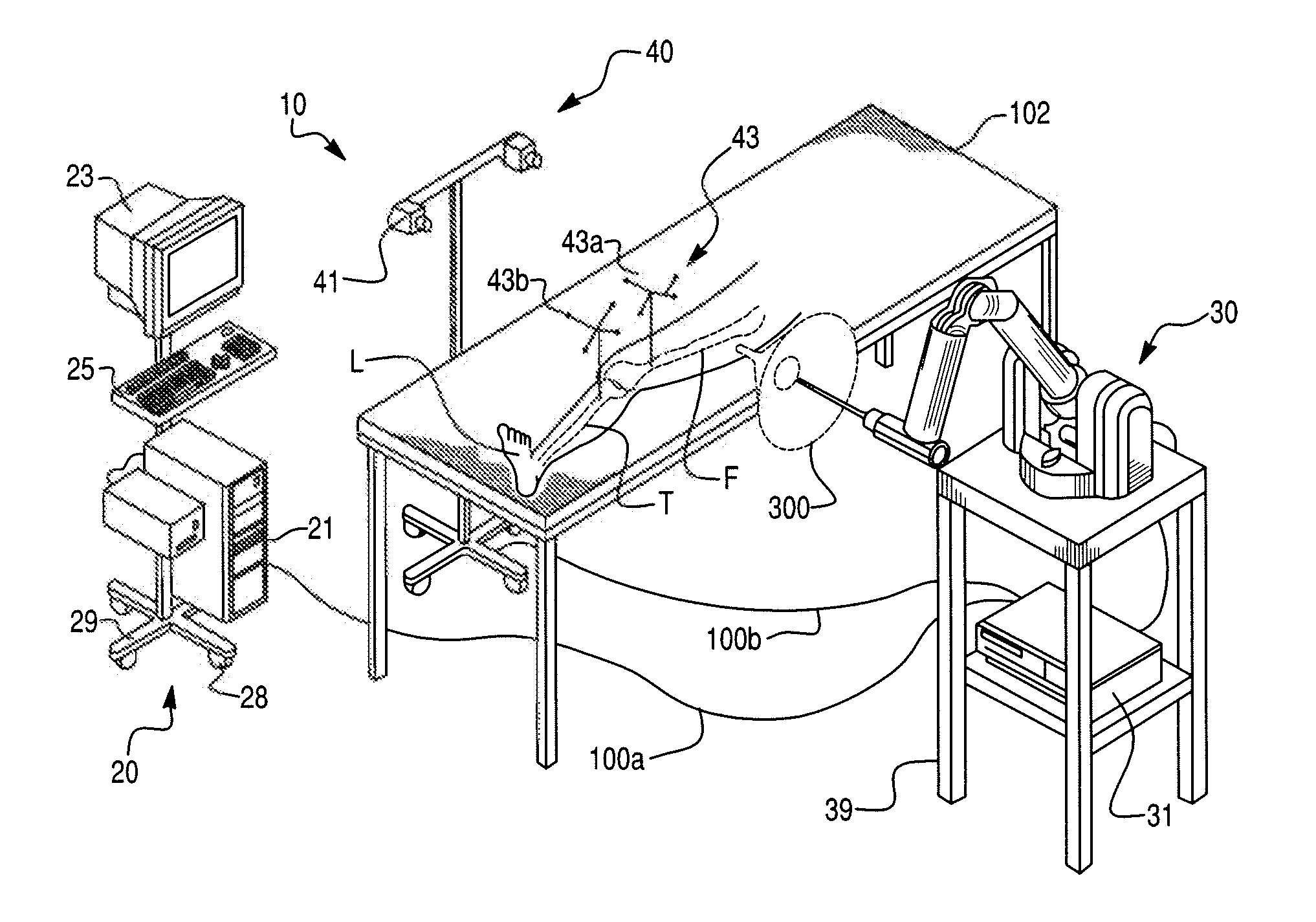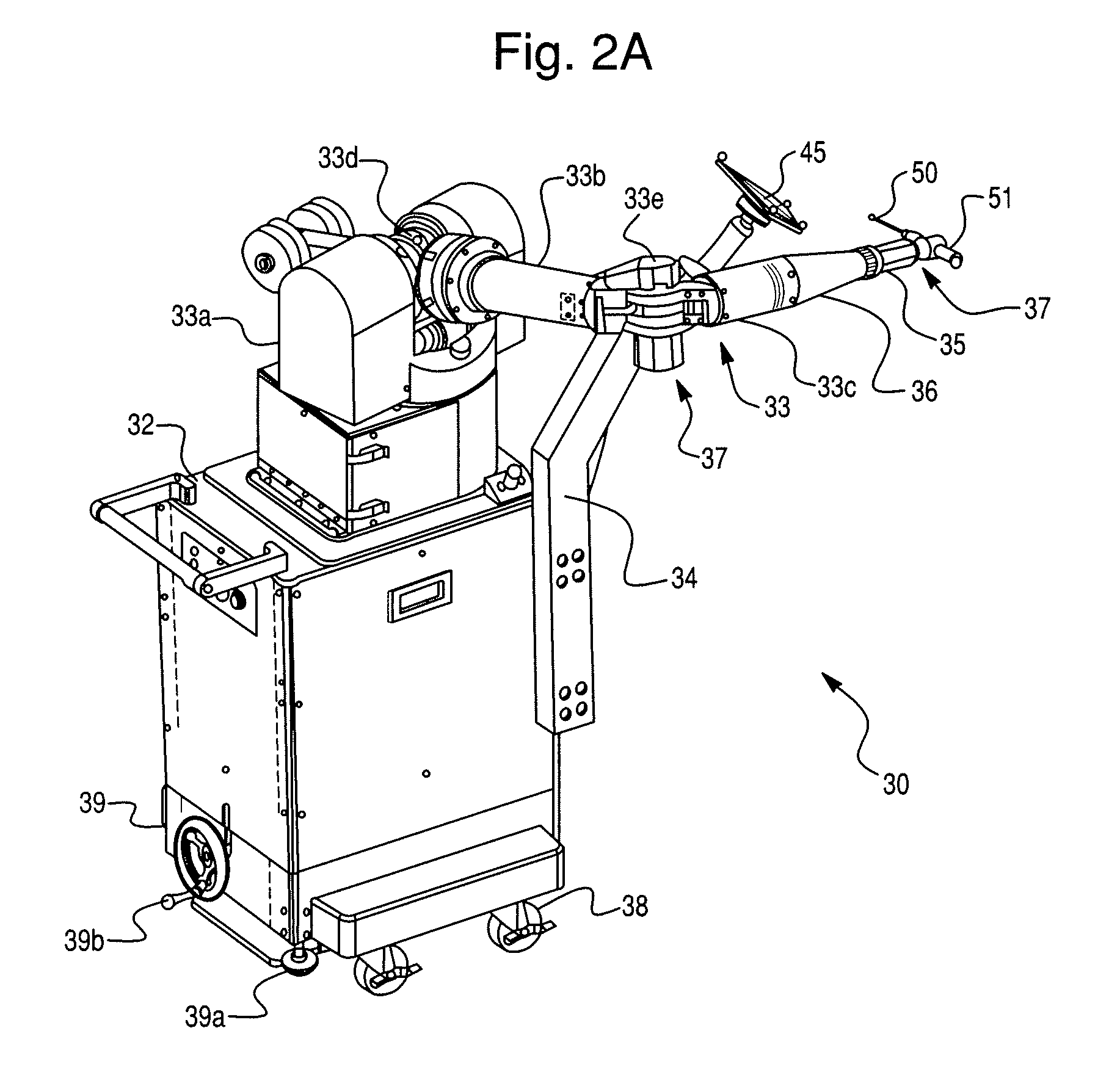System and method for verifying calibration of a surgical device
a surgical device and calibration technology, applied in the field of surgical system and method, can solve the problems of reducing the surgeon's ability to view and access the anatomy, limited visibility, and limited access to the join
- Summary
- Abstract
- Description
- Claims
- Application Information
AI Technical Summary
Benefits of technology
Problems solved by technology
Method used
Image
Examples
Embodiment Construction
[0052] Presently preferred embodiments of the invention are illustrated in the drawings. Although this specification refers primarily to orthopedic procedures involving the knee joint, it should be understood that the subject matter described herein is applicable to other joints in the body, such as, for example, a shoulder, elbow, wrist, spine, hip, or ankle and to any other orthopedic and / or musculoskeletal implant, including implants of conventional materials and more exotic implants, such as orthobiologics, drug delivery implants, and cell delivery implants.
[0053]FIG. 1 shows an embodiment of a surgical system 10 according to the present invention. The surgical system 10 includes a computing system 20, a haptic device 30, and a tracking (or localizing) system 40. In operation, the surgical system 10 enables comprehensive, intraoperative surgical planning. The surgical system 10 also provides haptic guidance to a user (e.g., a surgeon) and / or limits the user's manipulation of th...
PUM
 Login to View More
Login to View More Abstract
Description
Claims
Application Information
 Login to View More
Login to View More - R&D
- Intellectual Property
- Life Sciences
- Materials
- Tech Scout
- Unparalleled Data Quality
- Higher Quality Content
- 60% Fewer Hallucinations
Browse by: Latest US Patents, China's latest patents, Technical Efficacy Thesaurus, Application Domain, Technology Topic, Popular Technical Reports.
© 2025 PatSnap. All rights reserved.Legal|Privacy policy|Modern Slavery Act Transparency Statement|Sitemap|About US| Contact US: help@patsnap.com



